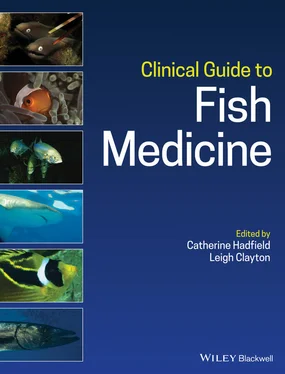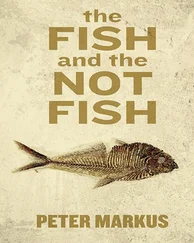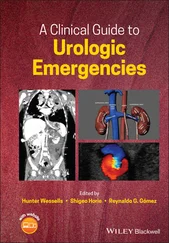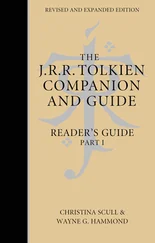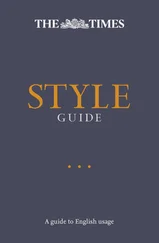We are aware that despite our best intentions, we will have inevitably created an imperfect product: overlooked certain aspects of the field; missed valuable information; and suffered from our own biases. Known limitations include the constant emergence of new literature and a focus on trends in the United States. Despite these limitations, we hope this textbook can still act as a framework for integrating new information, and inspiration for others to identify and address needs as the field continues to grow. We encourage each reader to share their knowledge and shape the future of this field. In fish medicine, you are a lifelong learner.
This book is divided into three sections: A, B, and C. Section A has chapters covering clinically relevant aspects of anatomy, husbandry, and case management. Section B covers presenting problems, grouped by system, with possible differentials and suggestions on how to approach cases. Section C covers common diseases seen in clinical practice and is grouped into noninfectious diseases, viruses, bacteria, fungi and fungal‐like organisms, protozoa, metazoa, myxozoa, and coccidia. Four appendices cover unit conversions, disinfectants, commercial laboratories, and veterinary training programs.
In putting this together, we relied heavily on an amazing group of contributors and reviewers, all of them experts in their field. We are indebted to every one of them. We have done all we can to ensure that the information in this text is accurate and up‐to‐date as of submission. If there are any mistakes in this text, the fault is with Leigh and me, not our contributors or reviewers.
To quote the indomitable Douglas Adams: “In cases of major discrepancy, it's always reality that's got it wrong.”
We hope that you can use this information to improve the care provided to these amazing animals and to enjoy many more fishy cases.
This book was a collaborative effort. We would like to thank the many authors, whose brilliance, hard work, and patience are greatly appreciated: Ilana Alderman, Shane Boylan, Al Camus, Melinda Camus, Steve Divers, Rolf Gobien, Lisa Hoopes, Liz Koutsos, Stéphane Lair, Lisa Mangus, Mike Murray, Natalie Mylniczenko, Don Neiffer, Allan Pessier, Andrew Pulver, Katie Seeley, Kent Semmen, Izi Sladakovic, Andy Stamper, Jamie Torres, and Claire Vergneau‐Grosset. Your contributions have greatly expanded the depth of information and discussions in this text.
We are grateful to all the additional people who contributed figures: Lance Adams, Jill Arnold, Eleanor Bailey, Pierre‐Marie Boitard, Ash Bullard, Sarah Chen, Tonya Clauss, Ashleigh Clews, Andy Dehart, John Drennan, Sarah Faris, Bob George, Bartolomeo Gorgoglione, David Groman, Angie Hadfield, Sarah Halbrend, Craig Harms, Mike Hyatt, Charlie Innis, Jack Jewel, Kim Knoper, Greg Lewbart, Eva Lewisch, Chris Limcaco, Rubén López, Robert Maclean, Craig Olson, Nick Reback, Aimee Reed, Carlos Rodriguez, Sean Sheldrake, Johnny Shelley, Tianxing Shi, Amanda Slade, Brittany Stevens, Justin Stilwell, Kathy Tuxbury, Joe Welsh, Catharine Wheaton, and Li Yao. You have helped bring the concepts presented here to life.
We would also like to thank the many people who reviewed sections, including Andy Aiken, Julie Cavin, Esteban DeSoto, Ruth Francis‐Floyd, Dan Fredholm, Kim Gaeta, Claudia Gili, Craig Harms, Matt Kinney, Greg Lewbart, Ken Ramirez, Drury Reavill, and Aimee Reed. Your efforts have broadened the perspectives captured here.
And a special thank you to all the staff at the National Aquarium, Seattle Aquarium, and New England Aquarium. It has been our privilege to work beside you and learn with you.
Catherine A. Hadfield and Leigh Ann Clayton
And to Leigh: I am deeply indebted to you for getting this project started and for your guidance throughout. Your leadership and friendship have shaped the vet and the person that I am.To my cousin, Anna Feldweg: Thank you so much for all your reviews and excellent advice. Your contributions have been invaluable and I have learnt so much from you.And I am eternally grateful to my mum and dad, Jane and Peter Hadfield, for their support and encouragement. I owe everything to them.
Catherine A. Hadfield
Ilana R. Alderman Born to Behave Boulder, CO, USA
Shane M. Boylan, DVM South Carolina Aquarium Charleston, SC, USA
Alvin C. Camus, DVM, PhD College of Veterinary Medicine, University of Georgia Athens, GA, USA
Melinda S. Camus, DVM, DACVP College of Veterinary Medicine, University of Georgia Athens, GA, USA
Leigh A. Clayton, DVM, DABVP (Avian, Reptile/Amphibian), eMBA New England Aquarium Boston, MA, USA
Stephen J. Divers, BVet Med, DECZM (Herpetology, ZHM), DACZM, FRCVS College of Veterinary Medicine, University of Georgia Athens, GA, USA
Rolf P. Gobien, MD Clinton X‐Ray Specialists Clinton, NC, USA
Catherine A. Hadfield, MA, Vet MB, MRCVS, DACZM, DECZM Seattle Aquarium Seattle, WA, USA
Lisa A. Hoopes, MA, PhD Georgia Aquarium Atlanta, GA, USA
Elizabeth A. Koutsos, PhD Koutsos Consulting, LLCApex, NC, USA
Stéphane Lair, DVM, DES, DVSc, DACZM Faculté de Médecine Vétérinaire, Université de Montréal Saint‐Hyacinthe, Quebec, Canada
Lisa M. Mangus, DVM Johns Hopkins University School of Medicine Baltimore, MD, USA
Michael J. Murray, DVM Monterey Bay Aquarium Monterey, CA, USA
Natalie D. Mylniczenko, DVM, MS, DACZM Disney’s Animals, Science and Environment Lake Buena Vista, FL, USA
Donald L. Neiffer, VMD, CVA, DACZM, MHS National Zoological Park and Wildlife Health Sciences, Smithsonian Institution Washington DC, USA
Allan P. Pessier, DVM, DACVP Washington Animal Disease Diagnostic Laboratory Washington State University Pullman, WA, USA
Andrew B. Pulver National Aquarium Baltimore, MD, USA
Kathryn E. Seeley, DVM, DACZM Columbus Zoo and Aquarium Powell, OH, USA
Kent J. Semmen Disney’s Animals, Science and Environment Lake Buena Vista, FL, USA
Izidora Sladakovic, BVSc (Hons I), MVS, DACZM Avian and Exotics Service, Northside Veterinary Specialists Terrey Hills, New South Wales, Australia
M. Andrew Stamper, DVM, DACZM Disney’s Animals, Science and Environment Lake Buena Vista, FL, USA
Jamie M. Torres, DVM Audubon Aquarium of the Americas New Orleans, LA, USA
Claire Vergneau‐Grosset, DVM, IPSAV, DACZM Faculté de Médecine Vétérinaire, Université de Montréal Saint‐Hyacinthe, Quebec, Canada
Section A Fish Medicine Topic Reviews
Introduction
Section A contains chapters on aspects of fish care related to veterinary medicine. The focus is on practical applications to help veterinarians apply their general knowledge to fish patients. Initial topics are anatomy and taxonomy, water quality, life support systems, nutrition, and training and enrichment. These are followed by chapters on clinical examination and diagnostics, including clinical pathology, diagnostic imaging, and necropsy. Anesthesia, analgesia, surgery, and endoscopy are then discussed. The chapter on medical treatment is followed by one focused on immersion medications. This section finishes with discussions on acquisition, transport, and quarantine of fish. Readers are strongly encouraged to review the literature to develop a deeper understanding of these topics.
Natalie D. Mylniczenko
Disney’s Animals, Science and Environment, Lake Buena Vista, FL, USA
Working with patients that live in a fluid environment is both interesting and challenging. Many fish are anatomically and physiologically unique; this chapter will focus on clinically relevant anatomical features. The information will be divided into bony and cartilaginous fish ( Box A1.1). The bony fish ( Osteichthyes ) consist of flesh‐finned fish (lungfish and coelacanths) and ray‐finned fish. The ray‐finned fish group is large and includes teleosts as well as sturgeon and gars. The cartilaginous fish ( Chondrichthyes ) are divided up into elasmobranchs (sharks, skates, rays, guitarfish, and sawfish) and chimaeras. Due to the enormous variety across these groups, the level of detail will vary. Other texts provide more detail on order‐ or species‐specific fish anatomy (Gilbert 1973; Harder and Sokoloff 1976; Ashley and Chiasson 1988; Stoskopf 1993; Hamlett 1999; Helfman et al. 2009; De Iuliis and Pulerà 2011; Farrell 2011; Carrier et al. 2012; Roberts and Ellis 2012; Jorgensen and Joss 2016; Nelson et al. 2016).
Читать дальше
